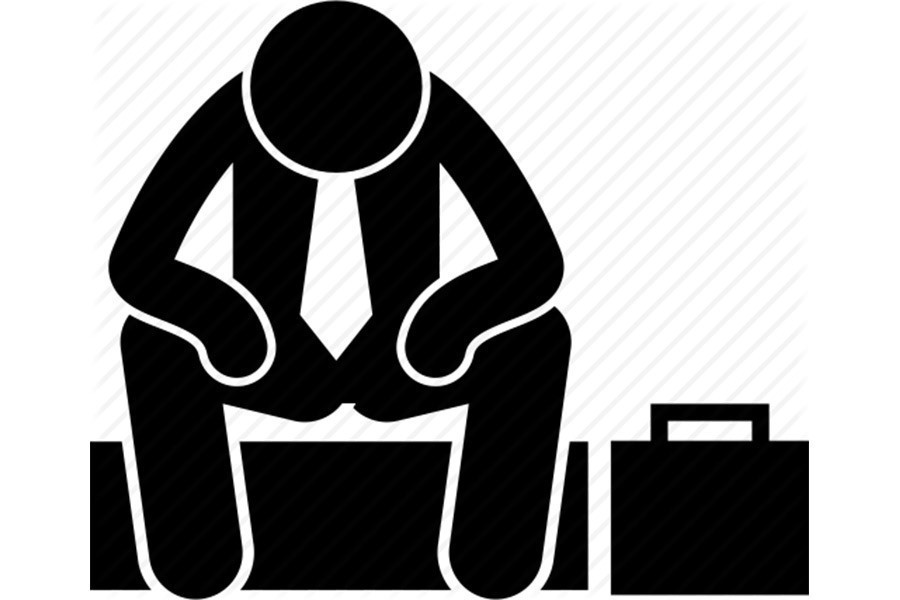Income erosion and lack of livelihood options triggered by prolonged general holiday -globally called shutdown -have forced people to leave Dhaka city for ancestral homes. Families settled in this capital for as long as 40 years reportedly had no option but to say goodbye to this city of once many opportunities. Pictures of families on furniture and other belongings-loaded truck were published in newspapers and shown by news channels. But how many people had to leave the city?
This city like other large cities in this country and elsewhere hosts seasonal workers, mostly of manual category. Their return to village homes does not quite make a lot of difference in the bigger picture of reverse migration. When it comes to even the lowest ranked income earners who have been living here for decades or even longer -albeit in shanties or similar other cheap shelters --having no village home to return, the impact has been really tragic and terrible. The caption of a picture of an aged man carried in a contemporary narrated in brief how he was forced to spend his time on footpath and sleep in the open on being out of work and unable to pay rent for his shelter. One wonders if he had no family!
How many people have turned paupers like this person may never be known unless a nation-wide study on the impact of corona-induced lockdown is carried out. However, a collaborative study conducted by the Power and Participation Research Centre (PPRC) and the Brac Institute of Governance and Development (BIGD) has come out with a representative percentage of reverse migration during the shrinkage of livelihood options. The study finds that in April last 6.0 per cent low-income people left Dhaka for their village homes and by June, the percentage of returnees increased to 15.64 per cent. Now it would be interesting to know what per cent of them is coming back to Dhaka in search of a livelihood and what per cent is going to stay back permanently.
With the coronavirus starting to stalk and claim lives, the government like its counterparts the world over announced closure of social and economic activities barring only medical and other emergency services. Clearly, the immediate victims of this shutdown were day labourers, footpath vendors and the multitude of employees in the informal sector. Such people do not have any savings at the end of a day or month and hence were compelled to take the long route back home.
Roughly, 80 per cent of low-income people were involved with some kind of economic activities in the informal sector. Small trades, factories, service sectors such as restaurants and transport business were all closed and/or on a tailspin. Apart from transport owners others had no means to pay wages to their idle employees. But even the transport owners or their association sitting on a fabulous amount of fund collected earlier on a daily basis for the welfare of transport workers did not come with any monetary help for the latter. Unsurprisingly, transport workers brought out protest rallies quite a few times on the street.
Now that the economy has opened, is there any chance of the victims of compulsive reverse migration getting back their employment soon? The answer is likely to be 'no'. Small businesses and factories can hardly get over such a reversal for several reasons. Under the capitalist system, the pattern is well set. It is the large conglomerates or corporate businesses that benefit from such economic downturn. The world's richest man Jeff Bezos added $13 billion in a single day to take his wealth to an astounding $189 billion last month. Curiously, the bosses of the high-tech giants in the United States of America, including Amazon's Bezos were summoned for a Congress hearing recently. The charge against them is establishing monopoly, stifling aspiring smaller groups of companies to do away with competition in the market.
When the motto is as much profit as possible by means fair or foul, the lower segments of society become the worst sufferers and recovery for small enterprises fades away in the distant horizon. The majority of such entrepreneurs and traders will not even qualify for access to the government-announced stimulus package. But if there is no turnaround at this level of economy, the little or no educated or trained who have lost employments during the lockdown cannot get those back. Above all, coronavirus shows no sign of disappearing soon.
The unemployment and related travails for families including starvation are likely to be made further worse by the migrant workers from abroad. Only the other day the heart-rending lamentation of a group of such workers point to the deepening crisis. The group flew to Qatar only to discover that the company for which they worked has ceased to exist. Now uncertainty looms large on 85,000 such migrant workers who were supposed to join their workplaces in some Middle-east countries. This is in addition to the returnees or those about to return on termination of their jobs abroad.
It is a huge army of unemployed workers who will have to be provided with employment. The country's capacity to absorb them is limited. But unless the threat of virus disappears, employment at home and abroad will not take place. A viable answer can be setting up of small units of agro-industries in rural areas where coronavirus is mostly absent. Alongside such units, other small and medium enterprises (SMEs) can be encouraged under a programme of production diversification. In the process rural economy will receive a shot in the arm and help limit migration from villages to cities.


